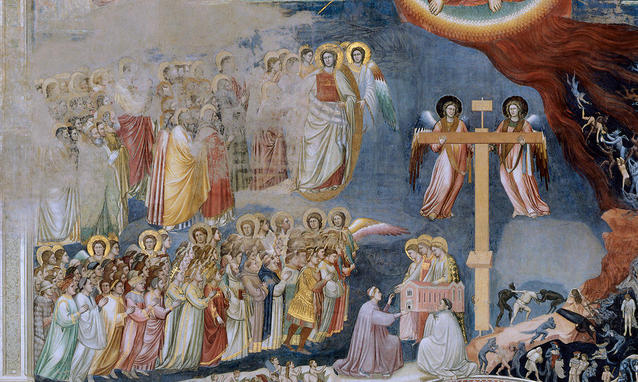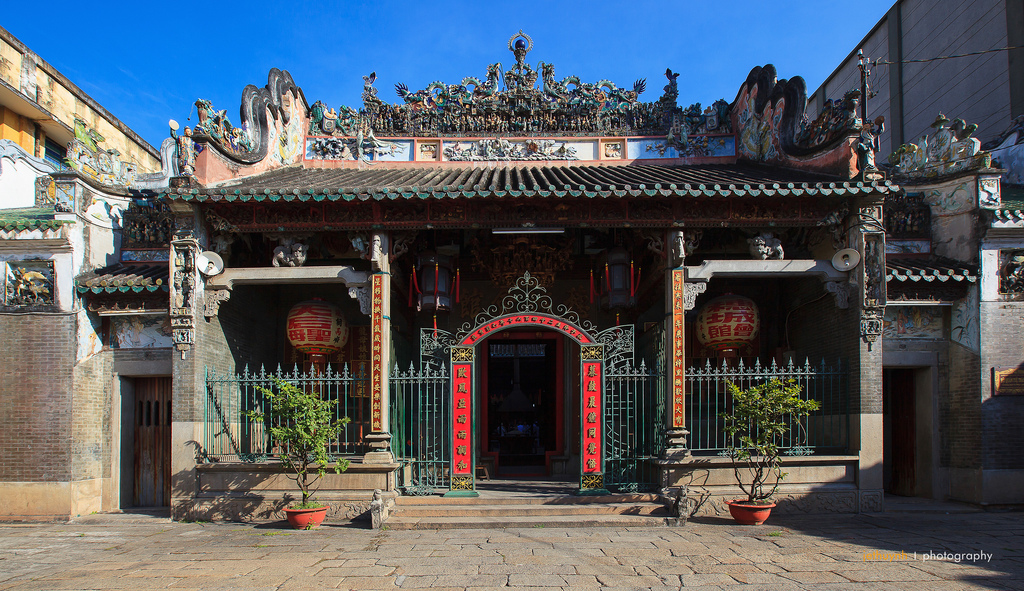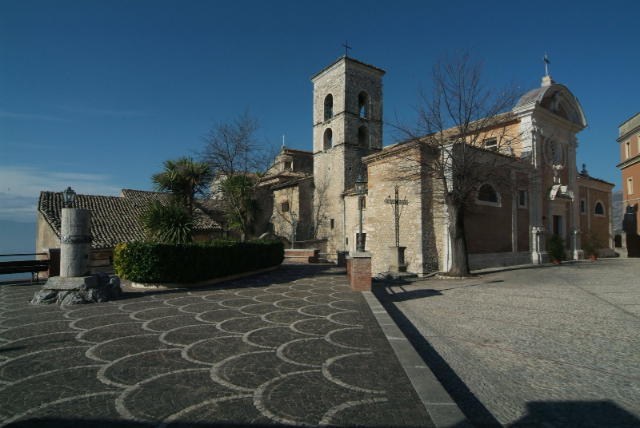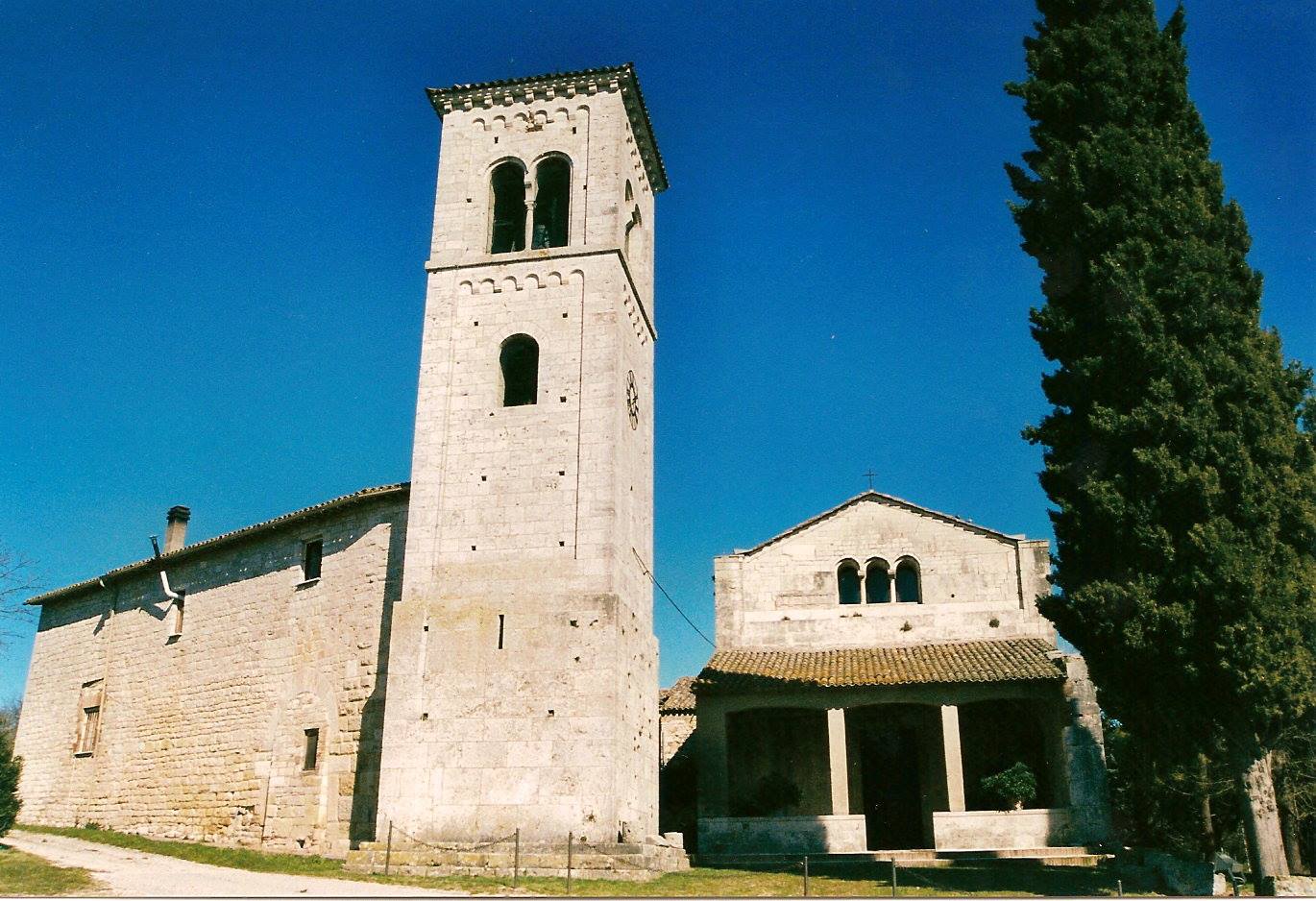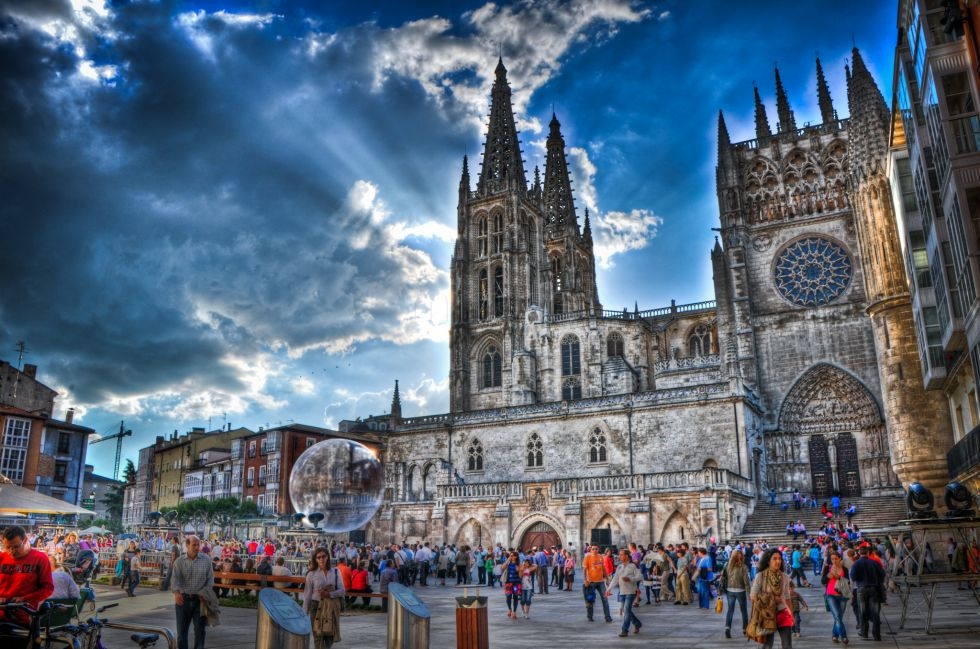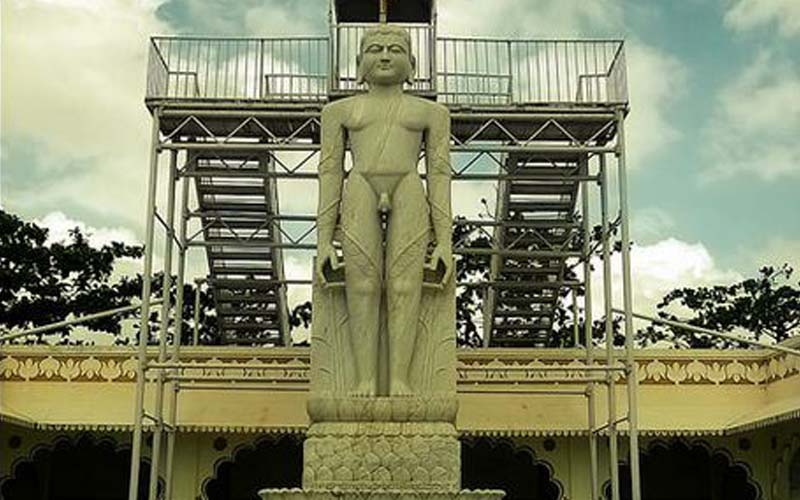The chapel has a very simple architectural structure: it is a single nave covered by a barrel vault, with a small apse covered by a cross vault. The iconographic program inserted by Giotto in this space is essentially based on stories from the lives of the Virgin and Christ. On the counterfacade (the inner wall in which the entrance portal opens) is depicted, according to tradition, the Last Judgment. The Stories, divided into 39 scenes, are arranged in three overlapping bands. A fourth band, located at the lowest level, contains allegorical representations of the Vices and Virtues.
The fresco cycle in Padua comes chronologically after the frescoes in the Upper Basilica in Assisi, and the relationship between the two cycles is one of the most controversial points in the entire history of Italian art. In fact, the stylistic discontinuities between the two cycles are evident without a shadow of a doubt. Discontinuities that are justified if we consider that the two cycles refer to two distinct artistic personalities, while they are less justified if the two cycles are by the same artist. This is one of the reasons for considering that perhaps the upper Assisi cycle is not attributable to Giotto, although his presence at the Assisi site cannot be ruled out. In practice Giotto’s presence at the Assisi worksite, and then at the Roman ones around 1298-1300, allowed him to acquire that mastery of three-dimensionality that in the Padua frescoes is manifested with great force, but still with some uncertainty.
In practice between the two fresco cycles the relationship between figures and space changes decisively. In the Assisi frescoes, space is precisely punctuated especially in the definition of the planes of the figures’ lying. Architectural elements also enter the representations by scanning the space in a pertinent way: in practice each figure has its own pertinent space both in the visual space of the representation and in the hypothetical real space from which the construction of the image starts. In the Padua frescoes, the relationship between figures and space is not always convincingly resolved. And it is here that one notices Giotto’s uncertainty, which is not an evolution but a step backward from the Assisi frescoes. This is particularly noticeable in some frescoes such as the Birth of the Virgin, in which it is clear that the interior space of the dwelling cannot at all correspond to the volume of the house. The woman facing outside remains compressed between the space of the bed and that of the wall into which the door opens: the construction clearly lacks "space".
Otherwise, the stylistic similarities between the Scrovegni Chapel and the frescoes of the Upper Basilica in Assisi are many. All the more reason to believe that Giotto’s language was actually formed in Assisi, in contact with the Roman school to which the frescoes of St. Francis are probably to be attributed.
Giotto’s style, which in Padua is already organized in an accomplished manner, is characterized, however, by other components, which are certainly the result of the Florentine master’s individual path. Particularly in the Padua frescoes there is a greater gravity of the bodies. In practice, the volumes are much more turned thanks to a masterful use of chiaroscuro, of which Giotto is undoubtedly the absolute master. But not only that. The figures really do have "weight," in the sense that they do not appear to be suspended in the air, but really rest on a plausible support plane (floor, ground or other).
In the frescoes of Padua we then notice a decidedly novel pursuit, for the artistic landscape of the time: the representation of foreshortening. In medieval painting, and in Byzantine painting in particular, faces are always in a frontal position or in partial three-quarter foreshortening. In the Assisi frescoes we can see, as in other examples of Italian painting of the time, the painters’ willingness to break free from this frontal obligation, and figures and faces are also depicted in profile or from various angles. Giotto goes further. He does not limit himself to the profile, but inclines the faces by representing them for the first time from below up. This is seen, for example, in the heads of the sleeping Roman soldiers at the Tomb of Christ. This is the first time this happens, anticipating a technique that will have considerable fortune in the Renaissance age.
In practice Giotto, in the Padua frescoes, shows great mastery in the construction and representation of the human figure, not so much in the construction of space. And this is despite the highly virtuosic exercise of "coretti": the first trompe-l’oil in Western painting. In these two panels Giotto simulates a space that is not there, creating an illusion of breaking through the plane of the fresco that is absolutely extraordinary. But the trick succeeds for him because the representation does not contain any figures, demonstrating that the problem, which we will later see recurring for all fourteenth- and fifteenth-century painting in the Gothic area, is precisely that of being able to integrate into a single visual space the figures and the architectural or natural space in which the figures act.
On the wall of the antifacade Giotto creates a grandiose Last Judgment, in which the intervention of helpers was probably massive. The image has a composition that is all in the groove of tradition, but one detail is also decidedly unprecedented here: below is Enrico Scrovegni in the act of donating the Chapel to the Church. The detail is not unprecedented as a subject, since it is found in other works, especially illuminated ones, from the Romanesque and Gothic periods: it is unprecedented in that it is not a ruler or pope who is represented, but a burgher. This, at the beginning of the fourteenth century, gives us the measure of how much the times had changed also from a social point of view: art is no longer the representation only of royal or religious power, but also of the economic power of the new industrial and merchant classes, emerging in the scenario of the new urban realities of the time.
(Morante)
